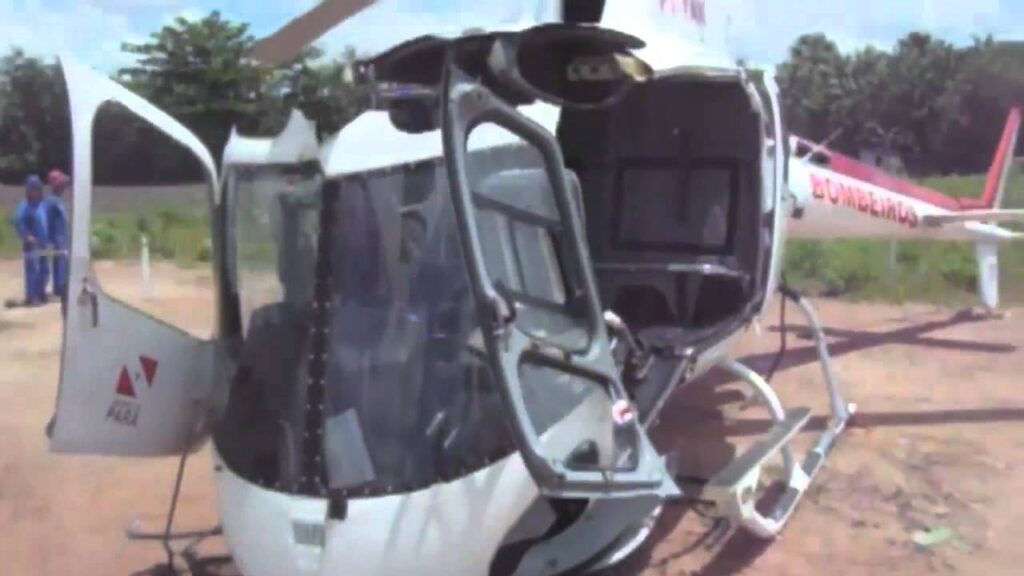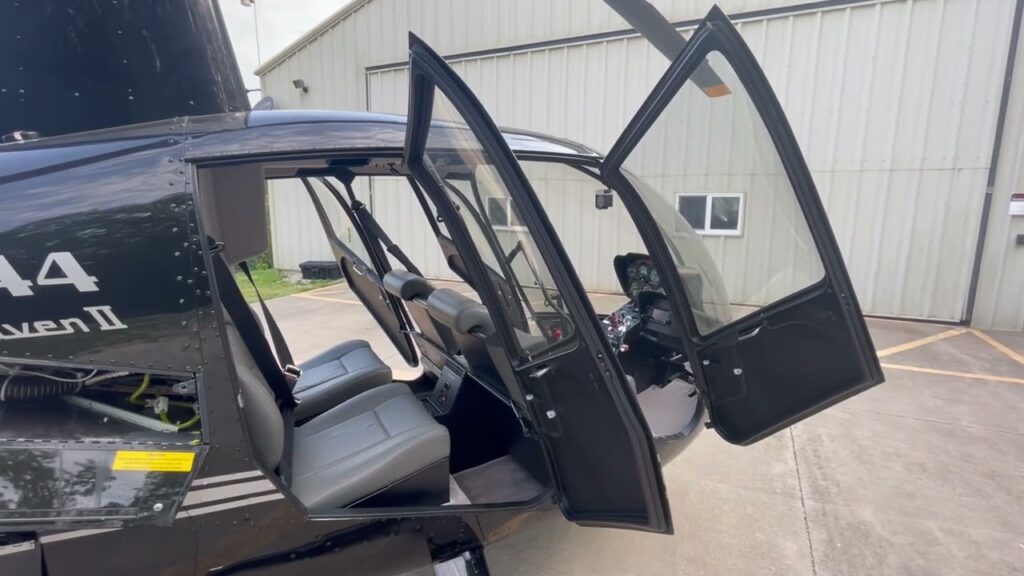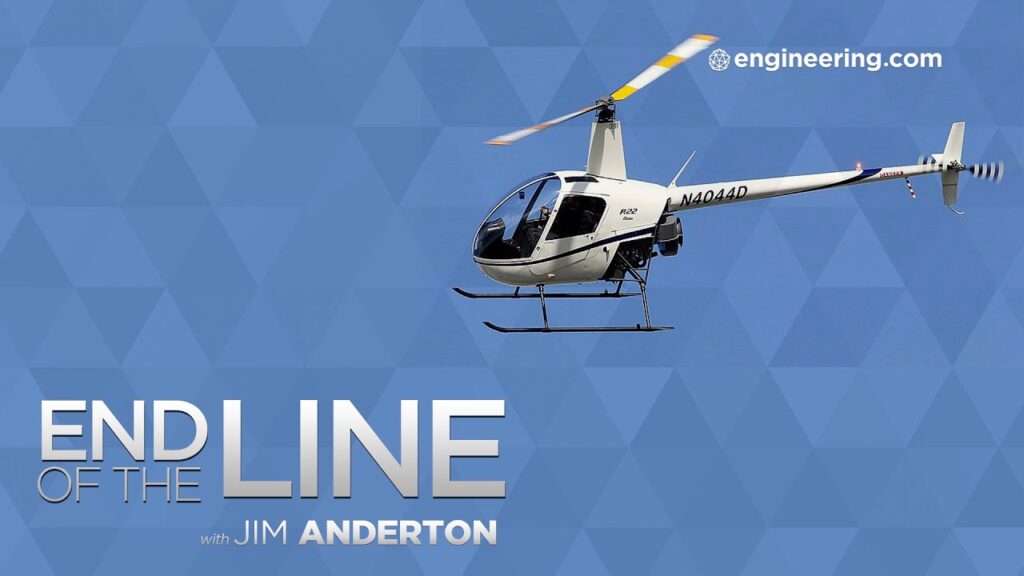The Importance of 12 Year Inspections for Eurocopter EC120 & AS350 Helicopters
Maintaining helicopter safety is crucial, not only for the pilots and passengers but also for ground operations. For owners and operators of Eurocopter EC120 and AS350 helicopters in Mexico, adhering to the mandatory 12-year inspections is an integral part of ensuring aircraft reliability and safety. These inspections, detailed by the manufacturer’s guidelines and aviation authorities, are designed to detect any potential issues that could lead to accidents or costly repairs if not addressed promptly.
The comprehensive 12-year inspection involves a thorough examination of the helicopter’s structure, systems, and components. This critical check includes the integrity of the airframe, the functionality of the avionics, the condition of the rotor blades and engine components, and the overall performance of the electrical systems. Special attention is paid to areas that are susceptible to wear and tear, corrosion, or fatigue, which could compromise the helicopter’s safe operation if left undetected.
For the Eurocopter EC120 and AS350, the 12-year inspection can also be seen as an opportunity to upgrade the aircraft. Operators can choose to implement the latest advancements in technology, such as updated navigation systems or improved communication equipment, which can enhance both the performance and the value of the helicopter. These updates are essential to keep the aircraft competitive and compliant with evolving aviation standards.
Another key aspect of the 12-year inspection is the documentation and record-keeping. Meticulous records of all maintenance activities and part replacements are critical for tracking the helicopter’s history. They serve as a testament to the aircraft’s health and maintenance for future buyers, which can significantly impact the resale value. Compliance with these inspections and accurate logs demonstrates a commitment to safety and proper care, which can be a powerful selling point.
Ignoring or postponing the 12-year inspection can have severe consequences. Not only does it put the aircraft at risk of undetected faults that could aggravate over time, but it also compromises the safety of everyone on board. Moreover, failure to adhere to scheduled maintenance checks can lead to violations of aviation regulations, resulting in hefty fines and possibly grounding of the aircraft until it meets the necessary safety standards.
Understanding the 12 Year Inspection Process for EC120 & AS350 Helicopters
The 12-year inspection for EC120 and AS350 helicopters is a critical milestone in the lifecycle of these aircraft, ensuring they remain safe and airworthy. This thorough inspection goes beyond routine maintenance, involving an in-depth examination of the helicopter’s structure, systems, and components. Operators must plan for this extensive downtime, as the process can take several weeks to complete. It is crucial to understand that this inspection is not just a regulatory requirement but a fundamental practice for maintaining the helicopter’s integrity and performance over time.
Diving into the details, the inspection encompasses a complete disassembly of the helicopter. Skilled technicians meticulously inspect the airframe for any signs of wear, corrosion, or damage. Important components such as the main rotor and tail rotor, transmission, and landing gear also undergo detailed scrutiny. Particular attention is given to areas that endure the highest stress during flight operations. Any detected anomalies or defects lead to repair or replacement of parts as mandated by the manufacturer’s specifications and aviation safety standards.
Along with physical inspections, the 12-year overhaul includes updates to avionics and other onboard systems. Advancements in technology often mean that this is an opportune time to upgrade critical systems to enhance functionality, safety, and compliance with emerging airspace regulations. All upgrades and repairs performed during the inspection need to be duly documented, with the records serving as an essential part of the helicopter’s maintenance history. This documentation is key for future maintenance activities and for reinforcing the resale value of the aircraft.
Why Your Eurocopter EC120 & AS350 Require Regular 12 Year Inspections in Mexico
Maintaining the airworthiness and safety of any helicopter is paramount, and this is especially true for operators of Eurocopter EC120s and AS350s in Mexico. The country’s diverse terrain and climate conditions place unique demands on these aircraft, which is why adhering to a strict maintenance schedule, including the regular 12-year inspections, is not just a regulatory requirement but a critical aspect of operational safety.
Over time, even the most robust helicopters experience wear and tear. The 12-year inspection is a comprehensive process that involves a deep examination of the helicopter’s structure, systems, and components. This inspection is much more than a routine check-up; it is a thorough procedure designed to uncover any issues that may not be evident during daily operations or during routine maintenance checks. It’s the equivalent of a full health check for your aircraft to ensure everything is functioning as it should.
In the harsh environments of Mexico, which can range from high altitudes to salty coastal air, materials used in helicopter construction can degrade at an accelerated rate. The Eurocopter EC120 and AS350, while designed to be robust, are not immune to such conditions. The 12-year inspection plays a critical role in identifying and mitigating the effects of environmental stressors. Technicians will meticulously inspect every part for signs of corrosion, fatigue, and other environmental impacts that could lead to a potential failure if left unaddressed.
Moreover, regulatory compliance is a key factor when it comes to operating aircraft in Mexico. Mexican aviation authorities, in alignment with international standards, mandate these inspections for good reason. Skipping or delaying the 12-year inspection can lead to legal and operational issues, costing operators more in fines and downtime than the inspection itself. It’s essential for operators to stay ahead of these requirements to ensure uninterrupted service and avoid regulatory pitfalls.
Lastly, the value retention of your Eurocopter is closely linked to your adherence to maintenance schedules. Aircraft that undergo regular 12-year inspections have a higher resale value and are more attractive in the pre-owned market. Buyers and brokers are well-aware that a helicopter with a comprehensive maintenance history is a safer and more reliable investment. Ignoring these inspections not only compromises safety but also impacts the long-term financial return on your asset.
The Benefits of Timely 12 Year Inspections on Eurocopter Helicopters
Owning and operating a Eurocopter helicopter entails a significant investment in both time and resources. Ensuring that these versatile aircraft are maintained to the highest standards is crucial for their longevity and safety. One of the most critical milestones in a Eurocopter’s life is the 12-year inspection. This comprehensive assessment goes beyond superficial checks, delving deep into the aircraft’s critical components to identify any potential issues before they develop into serious problems.
Enhanced Safety is, without a doubt, the paramount benefit of adhering to the 12-year inspection schedule. During these inspections, technicians examine every inch of the helicopter, including areas that are not regularly accessible during routine checks. By doing so, any signs of wear and tear, corrosion, or fatigue in the aircraft’s structure or systems can be detected and remedied. This proactive approach to maintenance greatly reduces the risk of in-flight malfunctions or failures, which can be catastrophic.
Moreover, regular 12-year inspections help to ensure that Eurocopter helicopters maintain their value over time. As with any high-value asset, a well-documented history of diligent care and maintenance is imperative when evaluating the helicopter’s worth. This doesn’t only reassure current owners but also boosts confidence among prospective buyers, ensuring that the aircraft retains its value in the competitive market.
Finally, compliance with the recommended 12-year inspection schedule reinforces operational readiness. Having a Eurocopter that is up-to-date with its checks and repairs means that operators can deploy their helicopters at a moment’s notice without worrying about unforeseen maintenance issues. This reliability is particularly crucial for emergency services, such as search and rescue operations, where any delay can have serious implications. Therefore, timely inspections are not just a matter of regulation compliance, but a cornerstone of operational excellence.
What to Expect During a 12 Year Inspection of Your EC120 or AS350 Helicopter
The 12 year inspection, also known as an overhaul or major inspection, is an essential maintenance milestone for your EC120 or AS350 helicopter. This comprehensive check is designed to adhere to the manufacturer’s specifications and aviation authority regulations to ensure the safety and airworthiness of the aircraft. Owners should anticipate a thorough examination of the helicopter’s structure, systems, and components, which can require a significant amount of downtime. It is important to plan accordingly as this process typically lasts several weeks, depending on the aircraft’s condition and availability of parts.
During the inspection, the helicopter will be taken apart to allow for detailed examination and testing of its critical components. Mechanics will focus on areas such as the rotor system, engine, flight controls, and avionics. Wear and tear on components is common and expected, but the extent can vary based on the helicopter’s usage and operating environments. It’s not uncommon for unexpected issues to arise during this intensive inspection, leading to additional repairs or replacements. Furthermore, any Service Bulletins or Airworthiness Directives issued by the manufacturer or aviation authorities will be addressed during this time to keep the helicopter compliant.
In addition to the mechanical aspects, the inspection also provides an opportunity to upgrade avionics, enhance interiors, and apply new paint if desired. Owners should consider the potential for technological upgrades that can improve performance, safety, and value of the helicopter. Although the 12 year inspection can be costly, it is a critical investment in the longevity and reliability of your EC120 or AS350 helicopter. This is the time to rectify any underlying issues and ensure that your aircraft is ready to provide many more years of service.
Choosing the Right Maintenance Provider for Your 12 Year Helicopter Inspection
When the time comes for a 12-year helicopter inspection, it’s crucial to select a maintenance provider that not only has the expertise and certification to perform the task but also understands the specific requirements of your aircraft. The right maintenance provider will ensure that your helicopter meets all the regulatory standards and is safe to operate, safeguarding both your investment and the passengers on board. To make this decision, take into account the provider’s history of service, their access to genuine parts, and their technicians’ experience with your particular helicopter model.
Research the Provider’s Reputation and Certifications
Start by investigating the provider’s reputation within the helicopter industry. A provider with a good track record is more likely to deliver high-quality maintenance. Additionally, certifications are indispensable. Ensure the facility holds all the necessary certifications and is authorized by aviation authorities to perform inspections on your helicopter’s make and model. Certification from the manufacturer or an authoritative aviation body is a strong indicator of a provider’s competence and reliability.
Assess Access to Genuine Parts and Advanced Equipment
The quality of the parts used during maintenance can significantly affect the longevity and safety of your helicopter. Therefore, it is paramount to select a maintenance provider that has direct access to OEM (Original Equipment Manufacturer) parts. Providers that maintain a stockpile of certified parts can offer quicker turnaround times, which is critical to minimizing downtime. Moreover, the presence of state-of-the-art diagnostic equipment factor heavily into the provision of thorough and efficient inspections and should not be overlooked.



